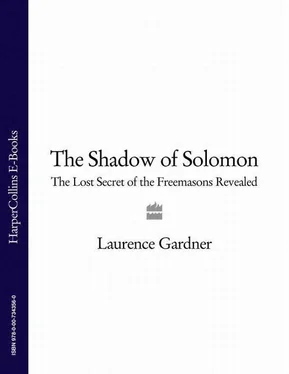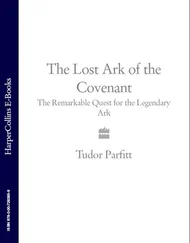Much later, in 1828-9, England’s Test Acts were finally repealed in favour of Catholics (with the exception of the offices of monarch and Lord High Chancellor). Then, in 1858, the provisions were relaxed in respect of Jews, and the Scottish Test Act of 1681 was overturned in 1889. In Britain today, all religious denominations (Christian or otherwise) are afforded the right of worship according to their beliefs and conscience—precisely as King James II (VII) envisaged over 300 years ago. James was way ahead of his time, but his public popularity counted for nothing in 1688, neither did his earlier courage on the battlefields of France and Flanders, nor his years of relentless work for the British Navy. Because of his liberal attitude in religious affairs, the stage was set for James’s regnal demise.
What has all this to do with Freemasonry? In actual fact, everything, for when King James was sent into French exile in December 1688, the traditional masonic inheritance of the Kings of Scots went with him—as did his key masonic allies. This is one of the reasons why today the 33-degree masonic working known as the Scottish Rite (albeit, as we will see, now a contrived Scottish Rite ) embodies rituals that are unfamiliar to the three degrees of English Craft Freemasonry ( see page 308). For now, to complete the 17th-century picture, we need to follow on with the drama of King James.
James had two daughters by his first wife, Anne Hyde of Clarendon, as well as a young son by his second wife, the Italian noblewoman Mary d’Este de Modena. The elder of the daughters, Mary, was married to Prince William of Orange, Stadhouder (chief magistrate) of the Netherlands. It had been hoped that this alliance would calm the long-standing dispute between Britain and Holland over international trading rights but, in the event, it worked to the contrary.
Given the situation of religious unrest in Britain, William saw his opportunity to dominate Britain’s trade from within and, with approval from the Anglican Church, he put together an invasion force. Meanwhile, the Westminster Parliament in London had denied King James the funds to maintain a standing army in times of peace, so when William’s assault came he had no means of defence. What followed in this large-scale, but comparatively localized, revolution was as pictorially dramatic as any Hollywood screenplay.
With a substantial fleet of ships and around 6,000 troops, William of Orange disembarked at Torbay in south-west England on 5 November 1688. Almost immediately, he issued violent threats against James’s family. Consequently, on 21 December, James’s second wife, Mary de Modena (disguised as an Italian laundress), and their son, the infant Prince of Wales, were secreted from London by night. Taken by armed riders across the countryside to the coast in howling gales and driving sleet, they embarked a small boat for Calais. Mary then got word to her cousin, King Louis XIV of France, who sent courtiers to fetch her. Once in Paris, Mary was met by King Louis and presented with the keys to the Château de Saint Germain-en-Laye. (This royal palace had previously been the grand residence of Mary Stuart, Queen of Scots 1542-87, before she also became Queen of France in 1559.)
Meanwhile, back in London, James received an ultimatum from his son-in-law, William. It stated that if James did not give up his crown immediately, then his family would be at risk. William was unaware that Mary and the prince had already left the country. Resigned to the situation, King James made a final gesture by throwing the Great Seal of England (the constitutional device of the English monarchy) into the River Thames. 4He then made his way to Paris and to the Stuart Palace of St Germain, which became his primary residence thereafter.
Following James’s departure, the parliamentary House of Lords determined that since he had fled, but not formally abdicated, there remained a legal compact between the king and the people. The throne was, therefore, ‘not vacant’ (although not technically occupied either). It was suggested that a Regency (with an appointed state administrator) was the best way to preserve the kingdom during the remainder of James Stuart’s lifetime, but William of Orange made it clear that he had no intention of becoming just a Regent—neither would he consent to sharing in government. His declaration was so forceful that there was an immediate fear of war, and many thought he would seize the crown regardless. A panic conference then ensued between the Houses of Lords and Commons, resulting in a decision that per haps the throne was vacant after all. 5
With the support of the Anglican Whig aristocracy, 6Prince William convened an illegal Parliament at Westminster on 26 December 1688, and the politicians were held at gunpoint to vote in respect of a dynastic change, with the majority voting in favour (although it was still a very close contest). The press later reported that ‘the Convention Parliament was in no way at liberty to vote according to conscience because Prince William’s soldiers were stationed within the House and all around the Palace of Westminster’. 7The press report illustrates the effect that this mil-itarily-obligated Parliament had on the monarchical structure:
King James was gone, and William was present with the Dutch Guard at Westminster to overawe, and with power to imperil the fortunes and lives of those who stood in the way of his advancement…William employed actual intimidation which resulted in majorities of one vote, in two of the most important divisions in the history of Parliament…In our time, governments have resigned when their majority over a censuring opposition has not been so small. Yet a majority of one is held to be adequate justification for a revolution involving the fundamental principle of primogeniture upon which our social fabric is based!
Not all the Church of England hierarchy in the House of Lords were in opposition to King James, however. His supporters included Archbishop Sancroft of Canterbury, and the Bishops of Bath and Wells, Ely, Gloucester, Norwich, Peterborough, Worcester, Chichester, and Chester. When James was deposed, they were all deprived of their sees and incumbencies. History has since been manipulated to suggest that James was displaced because he was a Catholic. In truth, he was deposed to guarantee power to a Parliament that was controlled by Anglican supremacists and not elected by a democratic vote of the people.
William did not get everything his own way though. He gained the crown as King William III only with the proviso that his wife, Mary (James’s daughter), held equal rights as Queen Mary II, instead of being ranked Queen Consort as is the norm. Consequently, the reign is known in history as that of William and Mary. At the same time, the 1689 Bill of Rights was introduced, stating that future British monarchs could reign only with parliamentary consent, and that MPs should be freely elected. In reality, MPs of the era were certainly not freely elected. Only a very limited number of male property-owners who enjoyed high incomes were allowed to vote, and the House of Commons was far from characteristic of the populace it was supposed to represent. The monarchical situation remains the same today in that HM Queen Elizabeth II reigns only with governmental consent as a parliamentary monarch. She is not a constitutional monarch (appointed by the provisions of a people’s written Constitution) as are other kings and queens in Europe.
The reason why the 1689 Act came into being was that, although Queen Mary was a devout Protestant, the ministers were concerned about William’s personal relationship with Rome. Holland was the chief northern province of the independent Netherlands which had previously been attached to the Holy Roman Empire, and it was known that William’s army consisted largely of Catholic mercenaries paid from the papal purse. King James II had assisted Louis XIV of France in his nation’s opposition to the Catholic empire, and it was anticipated by the Pope that, with William in charge of Britain, this support would cease, thereby weakening the French position.
Читать дальше












